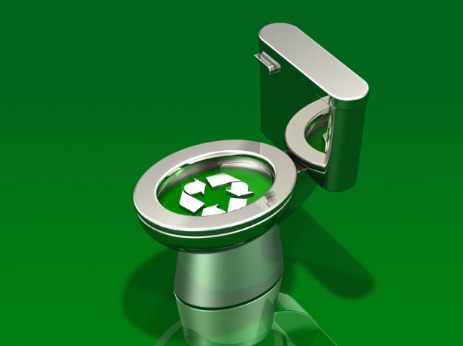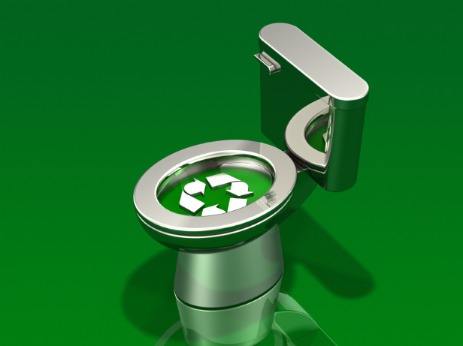 This is an opportunity we want to go down the drain.Recession-wracked California is truly going down the toilet.
This is an opportunity we want to go down the drain.Recession-wracked California is truly going down the toilet.
For green energy, that is. In a gift to headline writers everywhere, the California Energy Commission on Wednesday handed out nearly $1 million to fund an experimental project to convert what it politely refers to as “biosolids” into electricity. In other words, sh*t.
Okay, we’ll suppress our inner 12-year-old boy now. This is serious sh*t. No, really, we’ll stop.
Biosolids are a nasty pollution problem; beyond human waste, they can also include a sludge of heavy metals and other toxins left over from wastewater treatment. While in some cases biosolids can be used as fertilizer for crops, they most often have to be disposed of in landfills.
“Existing options for using biosolids are limited (mainly land application and alternative daily cover in landfills) and face increasing environmental challenges that could eliminate those options,” the energy commission noted. “Current disposal practices often involve hauling biosolids long distances, which consumes transportation fuels, increases greenhouse gas emissions, and increases ratepayers’ costs for wastewater treatment.”
California produced 661,000 dry metric tons of biosolids in 2009, according to the energy commission. Ick.
Thus this new move to see if renewable energy can be spun from dross. The $999,924 (guess the state couldn’t cough up another $76 to make it an even million) allocated to the Delta Diablo Sanitation District in Northern California will help pay for a $4.7 million research project.
A Bay Area company called Intellergy will use “steam/carbon dioxide reforming” technology to vaporize liquid residues and gasify the organic solid portion of biosolids in an airlock chamber. The company will pump in steam and carbon dioxide to create a hydrogen-rich gas that could be used in fuel cells to generate electricity.
The process remains unproven, but if it works it could supply the growing number of Bloom Energy fuel cells being installed by Fortune 500 companies, particularly on the campuses of Silicon Valley tech giants like Google and Adobe.
“California continues to make significant strides in bioenergy research,” James Boyd, vice chair of the energy commission, said in a statement. “By studying how to use biosolids more effectively, California will generate energy from previously untapped waste streams and reduce the volume going into our state’s growing landfills.”



